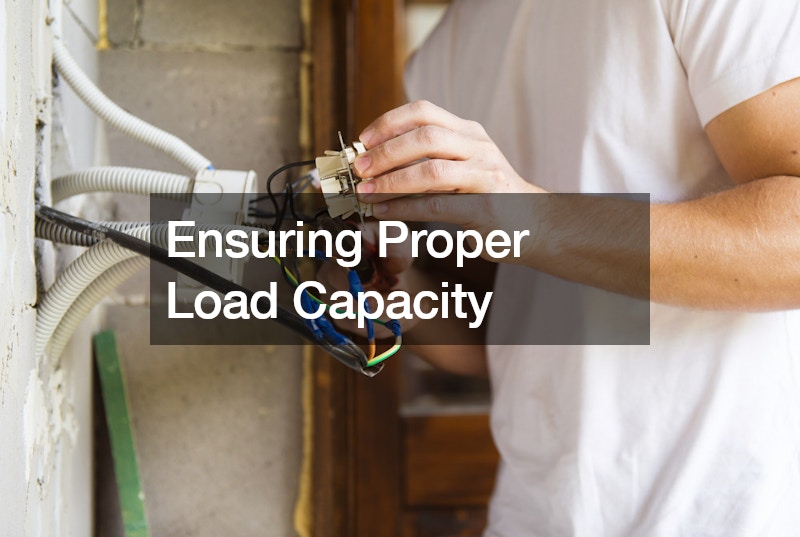
Electrical safety is a critical aspect of maintaining a safe and functional home. Burned outlets are a common issue that can lead to severe consequences, including electrical fires. Understanding the causes of burned outlets and knowing how to prevent them can help you keep your home safe. Here, we will discuss three common reasons for burned outlets and the steps you can take to prevent them.
Arcing: A Hidden Danger
One of the primary causes of burned outlets is arcing. Arcing occurs when electrical currents jump between loose wires or connections, creating a spark.
Over time, the wires can loosen, causing them to touch surfaces they shouldn’t. This can lead to electrical arcs or sparks, which can damage the outlet and potentially cause a fire.
Loose wires are often the result of a practice known as backstabbing, where wires are inserted into the back of the outlet. This method relies on a small clip inside the outlet to hold the wires in place. However, with repeated use, the clip can loosen, causing the wires to move and create an arc. To avoid this, always use side terminals when installing wires. Side terminals are secured by screws, providing a more stable and secure connection.
Another effective method is back wiring, which uses a clamp to secure the wires instead of a simple clip. This provides a safer and more reliable connection, reducing the risk of arcing. PSC Electrical recommends regularly checking your outlets for signs of damage or wear, and replacing any outlets that show signs of arcing or loose connections.
Undersized Wiring: Ensuring Proper Load Capacity
Another common cause of burned outlets is undersized wiring. Using wires that are too small for the electrical load they need to carry can lead to overheating and eventually, burning. This is especially important in areas like garages, where heavy-duty appliances such as air compressors and motors are often used. These appliances draw a significant amount of electricity, and if the wiring isn’t capable of handling the load, it can overheat and cause damage.
When adding new outlets or circuits, always ensure you are using the correct gauge of wire. For instance, a garage typically requires heavier gauge wire due to the higher electrical demands of the appliances used there. Consulting with professionals like PSC Electrical can help ensure you choose the right wire gauge for your specific needs. This not only prevents overheating but also extends the lifespan of your electrical system.
Overloaded Circuits: Balancing Electrical Load
The most common reason for burned outlets is overloaded circuits. This happens when too many devices are plugged into a single circuit, drawing more electricity than the circuit can handle. Overloaded circuits are especially common during extreme weather conditions, such as summer and winter, when additional heating and cooling devices are in use.
To prevent circuit overload, be mindful of the number of devices you have plugged into each circuit. High-energy devices like portable air conditioners and space heaters should be used sparingly and ideally on separate circuits from other electronics like computers and televisions. Spreading the load across multiple circuits helps ensure that no single circuit is overburdened, reducing the risk of overheating and burning.
It is also essential to understand the capacity of your home’s electrical system. Regular inspections by professionals, such as those from PSC Electrical, can help identify potential issues and suggest improvements. Upgrading your electrical panel or adding additional circuits may be necessary to accommodate the growing number of electronic devices in modern homes.
Replacing Burned Outlets: Safety First
When you notice a burned outlet, it is crucial to address the issue immediately to prevent further damage or potential fires. Before replacing the outlet, determine the cause of the problem. If the wires are loose due to backstabbing, switch to using side terminals or back wiring to secure the connection properly.
Inspect the wiring inside the outlet box for any damage. If the insulation is burned or the wires are damaged, cut off the damaged sections and strip the wire to make a fresh connection. If the wires are too short, use a pigtail connection to extend them. This involves connecting a short piece of wire to the existing wire using wire nuts or wire levers.
Consider replacing residential-grade outlets with commercial-grade or specification-grade outlets. These outlets are designed to be more durable and reliable, with stronger springs to hold plugs securely in place. They also support back wiring, providing a safer and more stable connection.
Lastly, ensure that any new outlets meet local and national electrical codes. Compliance with these codes is essential for safety and legality. If you are unsure about the requirements, consult with a licensed electrician.
Conclusion
Preventing burned outlets and ensuring electrical safety in your home requires vigilance and proper maintenance. By understanding the causes of burned outlets—arcing, undersized wiring, and overloaded circuits—you can take proactive steps to mitigate these risks. Regular inspections and upgrades, using secure wiring methods, and balancing electrical loads are crucial to maintaining a safe electrical system. For expert advice and assistance, consider consulting professionals like PSC Electrical, who can provide valuable insights and services to keep your home safe.
.

